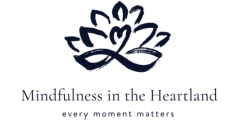Meditation is a microcosm, a model, a mirror. The skills we practice when we sit are transferable to the rest of our lives. ― Sharon Salzberg, Real Happiness: The Power of Meditation
If you’ve been reading my blog for any amount of time, you know I am a huge advocate of meditation. It has been part of my life for over twenty years and much of my personal transformation can be attributed to it.
In many respects, dedication to a meditation practice is a commitment to forming and maintaining an intimate relationship with oneself. It is the time and space we give to feeling a connection to the totality of our “being,” including that which we value and that which we don’t, that allows us to cultivate an inner sense of peace and acceptance.
Over time, as a natural extension of befriending ourselves, we find we are more capable of being peaceful with and accepting of those around us, bringing a thoughtfulness to our external circumstances that may not have existed before.
Like the debris that arises in a disturbed body of water, the thoughts of the mind can cloud perceptions, not allowing us to see things as they truly are.
Meditation is a simple, but not necessarily easy, practice one can use to quiet the mind, allowing one to live more fully in the present moment. When mental stillness is cultivated, we are able to see with greater clarity as our experiences become unclouded by the mind’s judgments and busyness.
Just as a muscle needs consistent exercise to gain strength, we must regularly commit to a meditation practice (and/or other mindfulness practices) to build our awareness and capacity to stay in the present moment. Over time, the benefits become profound and exponential.
Below, you will find an outline for a basic breath awareness meditation. This meditation was my introduction to the practice and is a method I return to regularly.
My hope is, if you have not had opportunity to explore meditation in the past, that your curiosity will compel you to give this a try…and that the experience will encourage you to return, again and again.
The Practice
Find a quiet location, free from distraction and interruption. Take a seated position that is comfortable, yet allows the back to remain straight and flexible. Your posture should embody a sense of alertness and poise.
You may choose to keep your eyes open or closed (open tends to allow for more sensory information…and a greater potential for distraction during the practice). If you choose to practice with your eyes open, keep your gaze relaxed and fixed at one point on the ground in front of you.
Begin by slowly and gently bringing the breath deep into the belly through the nose with the mouth closed. Exhale slowly and naturally through the nose. (do this for at least three breaths)
Now begin to breath naturally through the nose, bringing your awareness to the in-and-out flow of your breath. Notice where within the body the breath feels the most vivid to you (this may be the space between the nose and upper lip, within the nose, the roof of the mouth, back of the throat, lungs, belly). Continue to sustain your awareness of the sensation of the breath as it passes into and out of the body. You do not need to control the breath…allow the breath to breath itself.
Inevitably, the mind will want to wander during this practice. When you become aware that your attention has shifted away from the breath, without judgement or internal commentary, gently bring the attention back to the breath. Continue to do this every time you become aware you are no longer attending to the breath. This is the practice.
If you find your mind is particularly busy, you can count for each complete cycle of breath, one through ten. (For example, at the beginning or on the completion of an in-and-out cycle of breath, silently count “one” to yourself…at the beginning or on the completion of the next complete in-and-out cycle of breath, silently count “two” to yourself…and continue until you reach “ten”…returning to “one” on the next cycle).
Begin by committing to 5 minutes of meditation at least once per day, gradually increasing your time in five minute increments as you become more familiar with the practice.
If you would like to have access to an online timer that includes a bell to signal the beginning and end of a selected period of practice, please click here.
I hope you enjoy this time with yourself.
